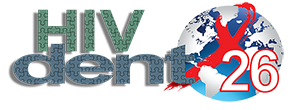Today’s young people have never known a world without HIV. On April 10, National Youth HIV & AIDS Awareness Day (NYHAAD) provides an opportunity to educate the public about the impact of HIV/AIDS on young people and to highlight the valuable work performed across the country in response to ending the HIV epidemic.
While most youth are thriving, we continue to see concerning behaviors and experiencesamong youth that put them at risk for HIV. Too many high school students are reporting sexual risk behaviors, high-risk substance use, violence victimization, and poor mental health. For instance, condom use among sexually active students decreased from 62% in 2007 to 54% in 2017, according to CDC’s Youth Risk Behavior Survey, presenting a serious health risk for HIV and STDs. With 1 in 5 new HIV diagnoses reported in young people aged 13-24 years and testing rates remaining low at only 9% among U.S. high school students who have ever been tested for HIV, education and public health professionals must work together to protect adolescents from getting infected with HIV. Using today’s powerful tools, we know how to protect youth, prevent HIV infection, and help young people with HIV stay healthy.
We can end the HIV epidemic by working together. Partnerships between HHS agencies, state and local officials, public-private collaborations, and community and faith-based partners are essential. Education agencies are another important partner in ending the HIV epidemic in the next 10 years and achieving an HIV-free generation. Schools play a critical role in educating youth about the prevention of HIV infection. Every day, more than 56 million students spend their day in school, which provides a unique opportunity to provide them with the knowledge, skills, and resources they need to prevent HIV infection during adolescence and into adulthood. CDC’s work in adolescent and school health reaches approximately 2 million students by funding education agencies and a network of leaders in school-based HIV, STD, and pregnancy prevention. CDC and its partners are taking action to end HIV on multiple levels, including funding, implementing, and evaluating programs and approaches that increase student access to quality health education, connect them to needed health services, and create environments that support students and help them feel safe and connected to school. These efforts are proven effective in reducing risk for HIV among youth.
We can do this, but we need your help. All youth deserve a healthy future. Schools, families, and communities must continue working together to provide safe and nurturing environments for every new generation. On NYHAAD, CDC joins with our partners across the country to ensure youth are protected from HIV infection. By ensuring that school environments are places where youth can gain the knowledge, skills, and resources they need, we can make a difference and help end the HIV epidemic.
Kathleen A. Ethier, PhD
Director
Division of Adolescent and School Health
National Center for HIV/AIDS, Viral Hepatitis, STD and TB Prevention
Centers for Disease Control and Prevention
www.cdc.gov/healthyyouth
Jonathan H. Mermin, MD, MPH
Rear Admiral and Assistant Surgeon General, USPHS
Director
National Center for HIV/AIDS, Viral Hepatitis, STD, and TB Prevention
Centers for Disease Control and Prevention
www.cdc.gov/nchhstp


